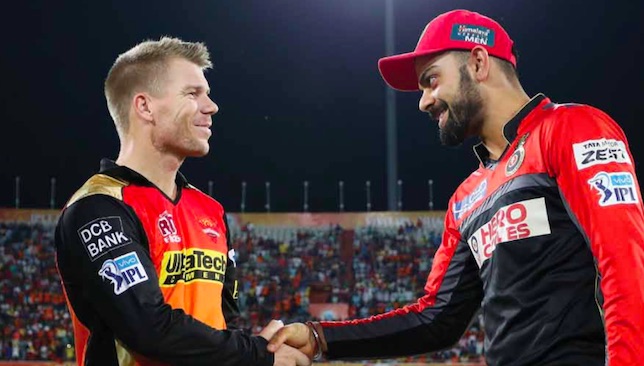
The final of the IPL signalled the end of a three-month long T20 season in the subcontinent.
Most top players in the world were on show during this period, first at the World T20 and then the IPL and it can be said that only the best managed to deliver on the big stage.
While the usual suspects did what they were expected to, more or less, some unexpected heroes emerged as well, giving hope to their franchises and countries for the future. Here we look at what three months of T20 cricket in the subcontinent taught us.
During the World T20, Virat Kohli (273 runs from five matches) and Joe Root (249 from six) were among the top three run-getters. Among the bowlers, spinners Mitchell Santner, Ish Sodhi and left-arm seamer David Willey (10 wickets each) were the leading wicket-takers during the main stage of the tournament. All these players have one thing in common and that is a classic technique.
What helped bring those with traditional playing styles to the fore was the nature of wickets this season in India.
There was a definite dearth of flat batting pitches where anybody with a bat in hand could plant his front foot down the track and swing over midwicket. Ability to manoeuvre the ball and wait for the right delivery became a much-needed quality.
Virat Kohli 2016 IPL Stats:
— Broken Cricket (@BrokenCricket) May 29, 2016
Matches: 16
Runs: 973
Average: 81.08
SR: 152.03
Fifties: 7
Centuries: 4
Fours: 83
Sixes: 38
That trend continued in the IPL. The top three runscorers in this edition of the tournament – Virat Kohli, David Warner and AB de Villiers – accumulate runs in their own way but what all three possess is a rock-solid technique.
They are established Test batsmen who have survived some tough periods in the five-day game. Taking on bowlers who are not Test match quality was never going to worry them.
On the bowling front, seamer Bhuvneshwar Kumar has been superb this IPL with 23 scalps from 17 games at an economy of less than eight. Here is a proper swing bowler who nips the ball in and the bowlers into submission and a Carlos Brathwaite will keep cropping up to steal victory from the jaws of defeat. But over a period of time, those with a solid base will shine through.
Bangladesh left-arm fast bowler Mustafizur Rahman can now be called a once-in-a-generation bowler.
He started off in the home series against India last year, where he took five-fors in his first two matches. The Indians simply couldn’t pick his slower deliveries and soon he was bamboozling the best batsmen in the world.
During the World T20, he was at his very best, picking up nine wickets from three matches at an economy of 7.16. Bangladesh couldn’t make it to the knockout stages but Rahman had proved his mettle.
The IPL went along expected lines, with ‘Fizz’ taking 17 wickets in 16 matches while giving away runs at just 6.9 an over. Only Pune’s Adam Zampa came close to his mark of wickets and economy rate but the leg-spinner played just five matches.
Going forward, I feel Rahman will continue to wreak havoc because many batsmen have said that they can’t pick his variations and even his fellow left-arm seamers admit they can’t replicate Rahman’s slower deliveries.
Fitness is the biggest challenge facing him and if he can keep injuries at bay, there will be no stopping the 20-year-old.
While players with classic playing styles have done well, it doesn’t mean every traditional player has been successful. For some, the game can be unfair. Off-spinners fall in that category, especially the finger spinners.
While leg-spinners and left-arm bowlers generally get rewarded more often for beating the bat, in the form of a stumping or outside edge, off-spinners don’t always get wickets for out-thinking the batsman.
Ravichandran Ashwin believes for finger spinners, especially off-spinners, to survive in T20s a different approach is needed. According to him, if a good ball fails to get a wicket or, worse, is dispatched to the boundary, maybe a well thought out ‘poor’ ball can do the trick. Many wickets do fall to high full tosses and long hops and Ashwin’s views are worth considering.
T20 is a constantly evolving game. The game is heavily loaded in the favour of batsmen and we are seeing more and more ‘mystery’ bowlers coming into the game, so much so that it is becoming the norm. But bowlers not bestowed with a special action too need to survive.
And if their best is not good enough to get the rewards, then maybe their worst might be enough to fox the batsman.